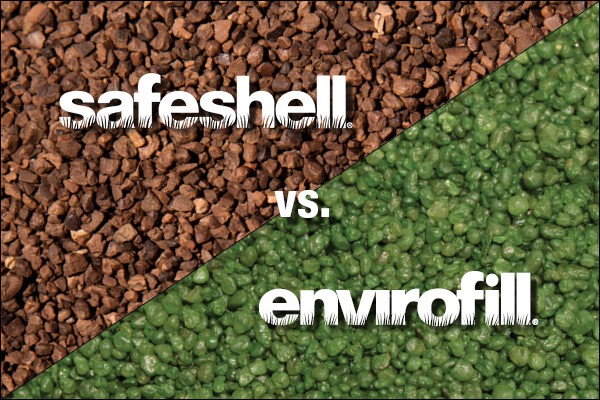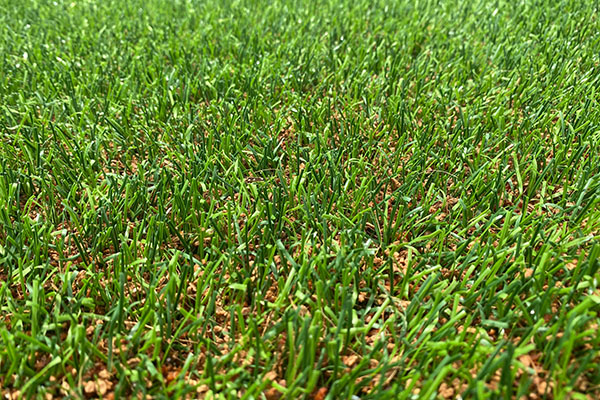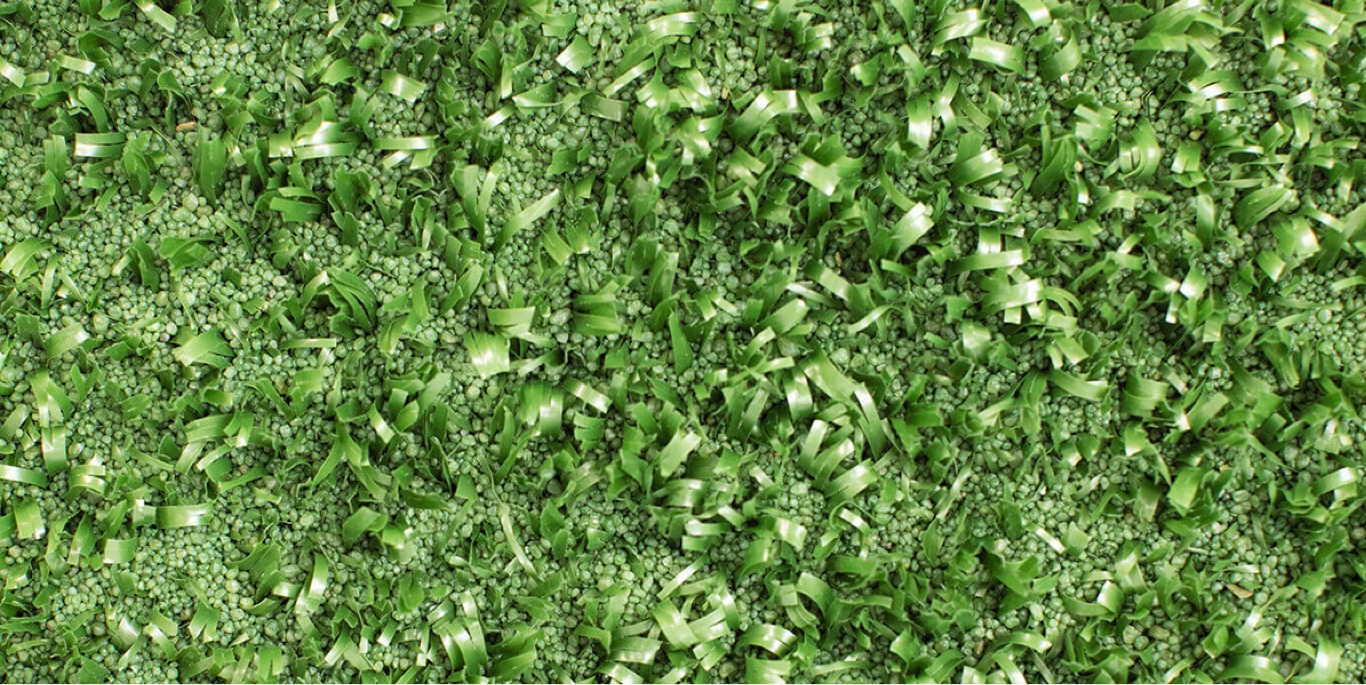
Infill Landscape Blog
Subscribe To Email Updates
Subscribe to our weekly newsletter and we’ll send updates straight to your inbox
Organic Infill Can Make Your Artificial Turf More Sustainable — 7 Things to Know
Longevity matters. If you’ve chosen artificial turf over natural grass, that’s clearly something you already believe.
But for a turf system to truly be designed to last, it’s not just the quality of your turf that counts. You’ll also want to be mindful when choosing the type of infill you pair it with.
Infill is key to synthetic turf’s durability for a few reasons. It serves as a protective barrier for turf backing and fibers, extending the turf system’s overall lifespan. Aesthetically, it provides some much-needed structural support, too, helping each individual blade of grass stay upright and intact. It improves drainage, preventing mold and mildew and keeping your turf from rumpling. And, if the infill you’re opting for is an organic one, it does all that while making your plant-based artificial turf system more sustainable.
So, can turf fields be sustainable? Absolutely, if you use organic artificial turf infill.
What is organic infill?
Most organic infill products today are made from things like walnut shells, wood fiber, coconut fiber, olive pits, and rice husks. All-natural, (usually) chemical-free, and compostable, they’re an increasingly popular choice for people who want to shrink their environmental footprint — an interest that artificial turf systems already help serve.
Not all organic infill is created equal, though.
Some aren’t as sustainable as they claim to be. Higher maintenance than their non-organic counterparts, these infills can require regular irrigation for optimal performance, ultimately making them less sustainable. They can decompose, settle, and compact over time, necessitating more than regular fluffing, topping up, or replacement to maintain a consistent playing surface.
That’s one reason Safeshell — an award-winning infill made from 100% natural, U.S.-grown walnut shells — has become a standout organic infill option. The most durable artificial grass infill on the market, Safeshell combines the best of performance and sustainability without requiring the same upkeep that other natural infills do. Here’s what that looks like.
7 things that make Safeshell a standout organic infill
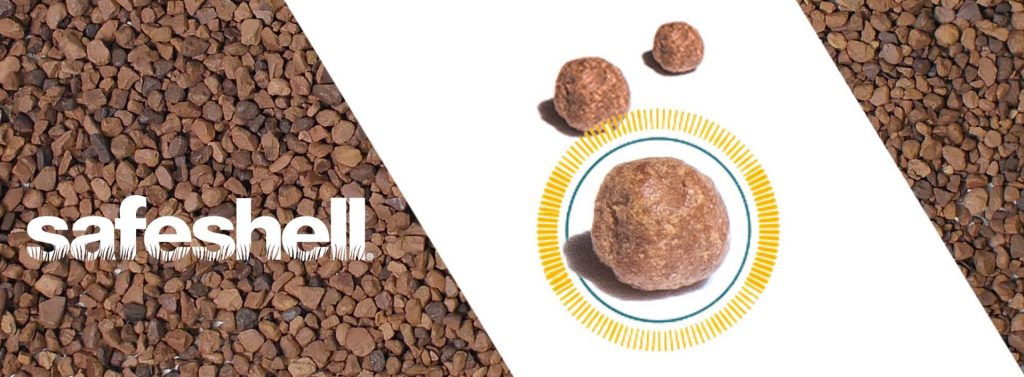
1. A turf infill so natural you can eat it.
Safety was truly the root of Safeshell’s conception. The first artificial turf infill to be certified USDA BioPreferred, it’s safe enough to eat (though we wouldn’t necessarily suggest that!) and was designed by a parent with a nut-allergic child. During Safeshell’s production process, any residual allergens that may have carried over from the walnut onto the shell are removed using a proprietary, chemical-free heating process. That means no harmful toxins ever touch your infill — or you.
2. It’s reliable.
Made from one of the densest and most durable nutshells out there, Safeshell biodegrades slowly over many years’ time — meaning, it doesn’t break down as quickly as other natural artificial turf infills like cork, and it doesn’t change shape in the heat or cold either. Its rounded shape offers consistent drainage abilities, too, and your infill won’t float or migrate when it rains (leading to unwanted undulations and unevenness on the turf!) Whether your turf’s surface is wet or dry, Safeshell infill will perform the exact same way.
3. It’s sustainably made.
Safeshell earned the Synthetic Turf Council’s Sustainability Award for a reason. From start to finish, it’s an artificial grass infill that comes from, then gives back to, the earth. Made from a blend of Black walnuts, which grow wild throughout the Midwest and are collected by hand, and English walnuts, grown on family farms in California, Safeshell’s origins are about as natural as it gets. After the walnuts’ meat is harvested for food products at our Arkansas facility, the discarded shells are turned into rounded Safeshell pellets — no chemicals or additives involved.
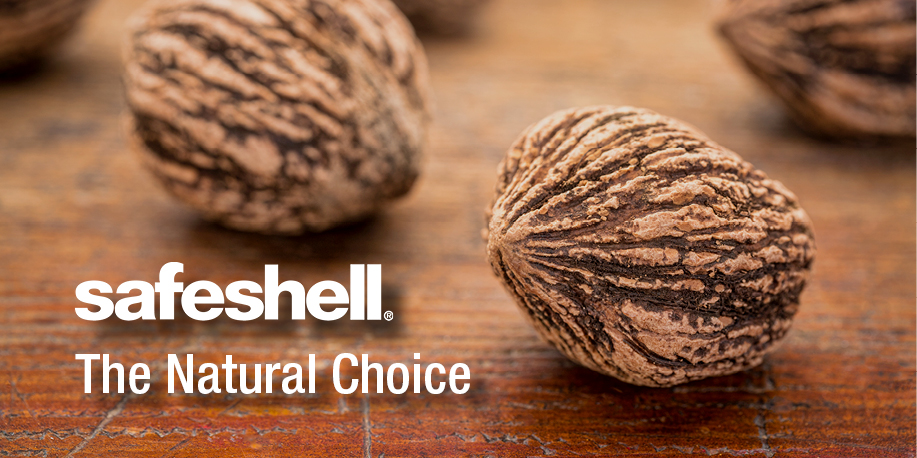
4. It requires little to no water (or upkeep in general).
One of the most eco-friendly things about artificial turf is how little water it uses compared to natural grass lawns. Take the positive impact of synthetic lawns in drought-prone L.A., for instance. There, synthetic lawns are estimated to save approximately 2.4 million gallons of water each year. But when you use an organic infill that requires a specific moisture content to be maintained, that advantage is reversed.
Safeshell, on the other hand, never has to be watered. It performs the same wet or dry and is one of the only natural infills on the market that doesn’t require an irrigation system for its warranty — in this case, an 8-year one — to stay intact.
5. A turf infill that’s naturally cooling.
Although this infill doesn’t require water, it can be beneficial for additional cooling benefits. Thanks to walnut shells’ inherent evaporative cooling properties, Safeshell is able to reduce the surface temperature of turf by up to 37 degrees on average. It absorbs rainwater with minimal expansion and releases it slowly over time — meaning, less humidity-fueled heat rising off your synthetic turf.
6. It’s easy on the eyes.
Safeshell doesn’t just mimic natural grass surfaces from a performance perspective. With rich, earth-tone coloring, it looks natural, too, which can help ensure your synthetic lawn’s aesthetic appeal.
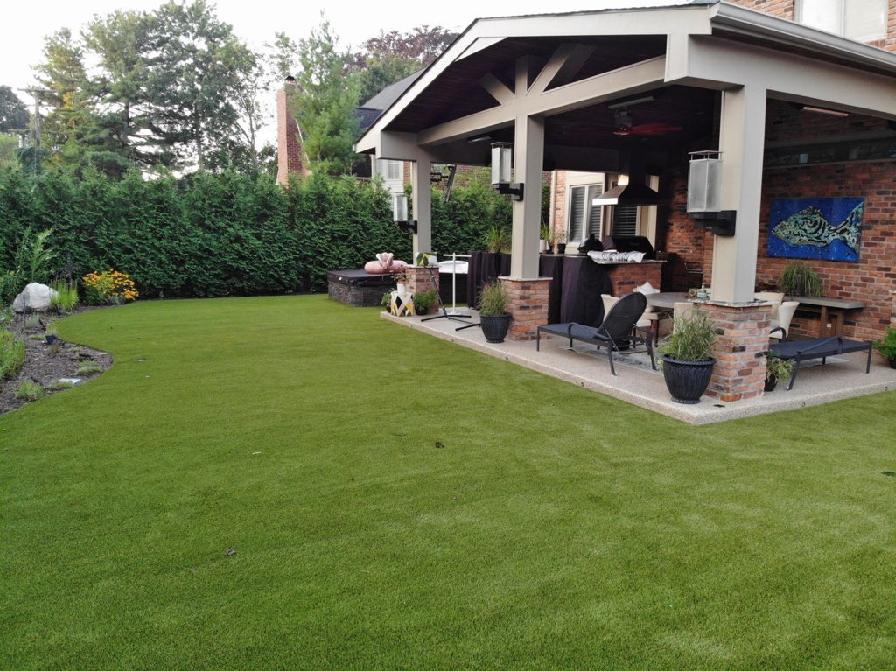
7. It has a truly circular lifecycle.
A “no landfill infill,” Safeshell naturally decomposes at the end of its lifecycle. While many non-organic infills, like crumb rubber, offer the benefit of reclaiming and recycling old rubber, most often, that reuse is only temporary, with much of this rubber still ultimately destined for landfills. Safeshell’s decomposition is a true completion of its organic, leave-no-trace lifecycle.
Where to use it
There’s no shortage of applications for artificial turf that uses Safeshell infill, from backyards and around the pool to shared recreational spaces. Safeshell’s toughness, durability, and naturally cooling properties make it a great fit for the sports field — check it out on Brooklyn Bridge Park’s soccer field — while its allergen- and toxin-free status make it a perfect, and perfectly safe, pick for the playground.
Where to get it
Ready to go organic and make your artificial turf less, well, artificial? Safeshell is sold in 25-pound bags for landscape applications and can be shipped anywhere in the U.S. through our nationwide shipping partner. Learn more about Safeshell natural infill, and write to us today to discuss your project and get a quote.
Similar Blogs

